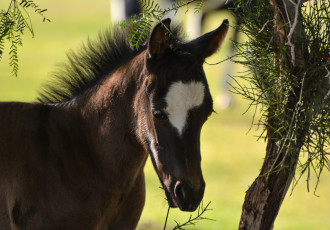Quality horses are actually few and far between. If you are considering purchasing a horse in the near future, trustworthiness and trainability are two characteristics you should be concerned about. We have Paints, Appaloosas, mares, geldings and a stud. Don’t buy a horse without seeing ours first.
Those interested in purchasing a quality horse can go for a test drive at Kingston Ranch, which is a 50-minute drive from Las Vegas or a 45-minute flight from Los Angeles. We have a 3,400’ private runway. Flying and driving instructions are right here on our website. Serious buyers should give me, Al Marquis, a call at my office (702-942-2127) or my cell (702-809-6357) or email me at amarquis@maclaw.com.
My goal is to raise and train more horses. Unfortunately, I have to sell some of our horses in order to make room for the newcomers. It is like selling a member of our family.
If you are concerned about you or your children being injured while riding or otherwise working with their horse, you do not want to be hassled by a horse who is stubborn or dangerous. You need to come and ride one of our Kingston Ranch horses. At the very least, you will have the opportunity to see how a well-trained horse actually conducts itself.
I have been raising and training horses at Kingston Ranch for 20 years. Each is imprinted at birth. Within 24 hours, they are led with a halter and rope, and they enter the horse trailer. At six months, they are accustomed to a saddle.
When kids visit the ranch, I always ask them, “Do you think horses are brave or they are big fraidy cats?” Comparing the size and strength of the horse to themselves, at least half the kids believe that horses are brave. Of course, nothing could be further from the truth. As natural prey animals, they are as jittery as a bunny. And who could blame them? In the wild, among prey animals, he who panics last is eaten, which means that just about every horse alive today has the genes of its ‘fraidy cat’ ancestors.
For thousands of years, up until the latter part of the 20th century, the accepted method of training was to capture a wild horse and then subdue him through the use of pain and fear. Captured and restrained by predators, the horse was terrified. At every opportunity the horse was tempted to break free or at least fight back by kicking, biting and stomping. Few wranglers referred to their method as “training.” Instead, they “broke” a horse‒an apt term for the brutality imposed. Wild horses were often tied to a tree or sturdy post and left for days. They were then subjected to “sacking out,” which involved a wrangler repeatedly striking the horse with a burlap bag–another terrifying experience for a horse.
Then a saddle was placed on the horse’s back, and he bucked until he once again became exhausted. This was followed by a bridle that involved a foreign object being forced into his mouth. And finally the predator actually got on the horse’s back‒the most terrifying act of all.
Is it any wonder, therefore, that horses trained in this way would run off or bite or kick when given the opportunity? Is it any wonder that they did not trust people? Is it any wonder that when out for a ride, such horses want to return to the barn as soon as possible?
It does not have to be this way. Actually, it never had to be this way, but few trainers looked at the situation from the horse’s perspective. Horse trainers of old were a pretty tough bunch. They had to be. Think about the kind of men who were attracted to that profession–often men who enjoyed subduing another living creature with the use of force and pain. The poor horses.
Today we know that imprinting and gentle persuasion are the keys to a well-trained horse, who will not only follow your commands, but will interact with you as a respected partner.
Each horse is being offered for sale at about half its true value. To see the horses who are for sale, click on the names below:
• Hot Flash (Sorrel gelding named after my wife)
• Zoie (Paint Mare)
• Cha Cha (Appaloosa Mare)
• Lola (Filly born 5/13/15)
• Tango (Sorrel Tennessee Walker)
• Kadilak (Paint Gelding)
• Dixie (Paint Mare)
• Milagro (Paint Stud)
• Cloie (Paint Mare)
• Star (25 Year Old Starter Horse)

